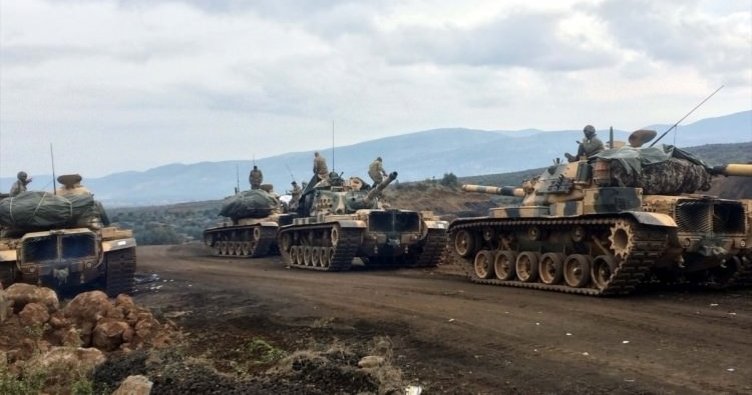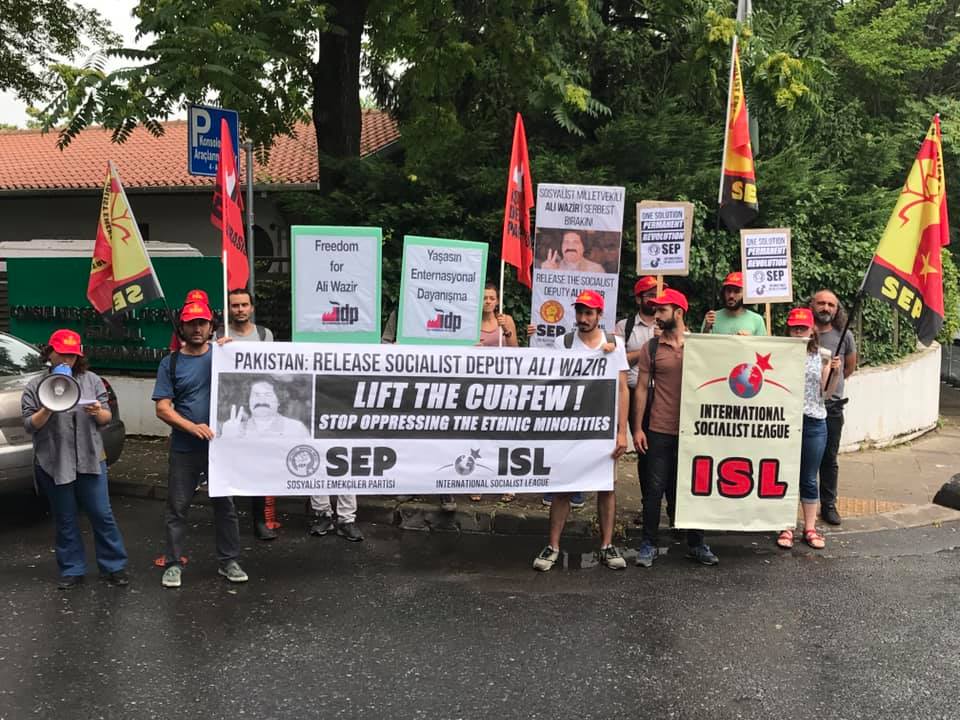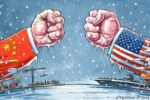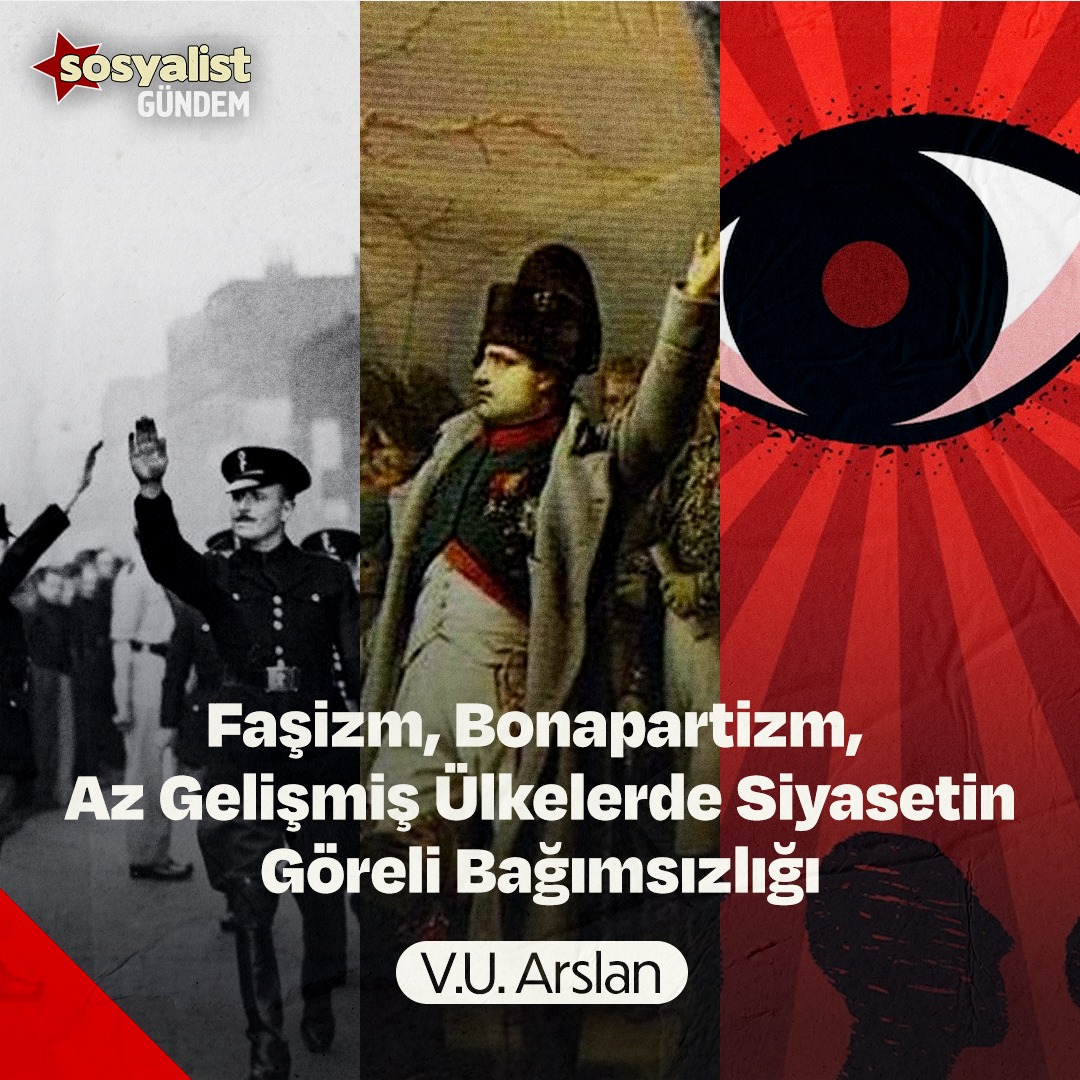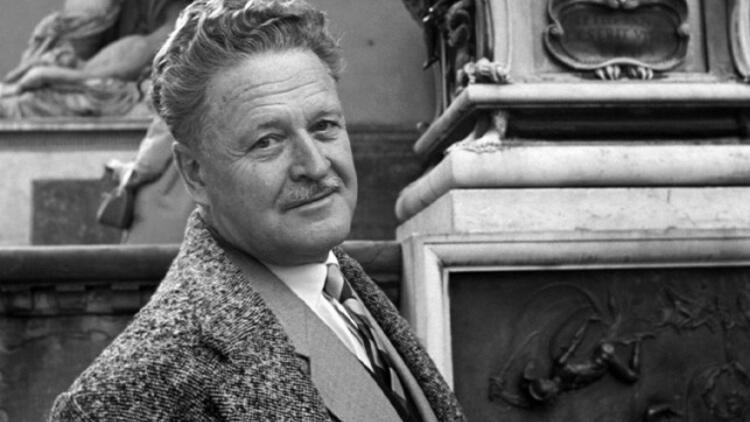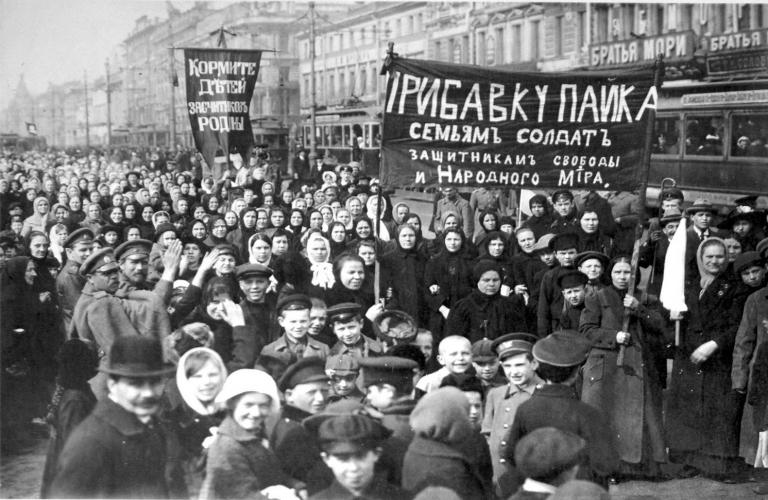- Öcalan Marx’ı Yine Aşmış da Nereye Varmış? – Güneş Gümüş - Aralık 14, 2025
- ULUSLARARASI SAVAŞ KARŞITI FİLM FESTİVALİ ÖDÜLLERİ SAHİPLERİNİ BULDU ! - Aralık 10, 2025
- Barışa Karşı mıyız? Sürece Nasıl Yaklaşmalı? - Kasım 25, 2025
The impression of revolutionaries of Turkey about South America is full of sympathy and hope. Che’s country witnessed countless uprising, heroes and paid heavy bills.
Latin America is a region that the gap between classes is quite huge and the left is more hegemonic than the other countries. Thus, revolutionaries should always keep a watchful eye on Latin America. The continent will have new developments in the new era.
WHAT ELECTIONS ON 11TH OF THE AUGUST SHOWS US IN ARGENTINA
In the first round of the general national elections which was done last Sunday in Argentina, Kirchner had a major decline (from %54 to %26) while Workers Left Front which is formed by revolutionary and centrist organizations took 900.000 vote and got a historic victory. Until these elections, the front could only gain 660.000 votes at maximum in 2011. While the results point out the end of Kirchnerizm, states the chances and the potential of Workers Left Front consisting PO (CRFI), PTS (FTCI), IS (UIT).
The results of the elections present the features of the new era the continent in. The first remarkable feature of this period is that the era of the reformist and nationalist presidents has come to an end.
After it had entered the 21th century with the uprisings, Latin America passed the last ten years relatively calm. Because of the lack of Bolshevik revolutionary leadership, the uprisings in Argentina, Bolivia and Venezuela had had failed and the masses inclined to leftist politicians who had promised reforms. Chavez in Venezuela,Morales in Bolivia, Kirchner in Argentina, Lula in Brazil, Zaleya in Honduras,Ortega in Nicaragua, Vazquez in Uruguay, Bachalet in Chile, Lugo, in ParaguayCorrea, in Equator were elected for presidency. Among those, Chavez and partly Morales with the help of the financial sources comes from oil and natural gas, could follow relatively radical reform programs while the other names could gain support owing to the economic growth of 2000’s which brought about an increase in the level of the life standards of the poor (like AKP in Turkey). However, in reality there was only quite little development in the huge crookedness of Latin America. In addition to the Chaves’ and Morales’ nationalist and pungently anti-American rhetoric, Lula and Kirchner’ much more balanced discourse particularly estranged the continent from USA standing closer to Russia and China in the world politics.
Worker movement had passed stagnant years in the last period. Firstly, laborer masses had been in a tendency to defense those leftist leaders, which they voted, against the right. Trade union bureaucracy and its allies, like centralist and reformist leftist organizations, had been either under the service of those presidents or follower to take the advances of the bourgeois governments. Labour aristocracy’s breakwater role was quite effective in the stagnancy of the worker movement in that period. In addition, the relative increases in the real wages which was brought by the economic growth period, had a tranquilizer affect.
In these days, the situation tends to change radically. First of all, it is the end of the economic growth period. For instance, the star of the capitalist world economy Brazilian economy could grow only by %0.9. Thus, reformist leaders are now in a hard situation. Now, the first thing they do is to attack the working classes through austerity politics. Furthermore, they tried develop an intimacy with USA. What they did is exactly following the way of Latin American traditional right parties. That’s why they are now face with reactions of the working class and quickly lose their popularity.
After the upcoming elections most of them will be defeated by the rightist governments. And the others, who will still be in the government, will have to follow the way of rightist bourgeois parties. The inevitable result of this will be the intensifying class struggle. Laborer masses will not be docile anymore against the rightist parties. Moreover, they will be as tolerant as before to the leftist president voted in the past. The first example to this is Brazil.

(Left FronT’s regional vote proportions)
KIRCHNER’S ERA ENDING IN ARGENTINA
After the economic crisis in Argentina in 2001, Kirchner could reach important economic growth rate with the help of convenient waves of world conjuncture. This was the base of Kirchnerism. Nestor Kirchner then Kristina Kirchner, without implementing a reform program like Chavez, the real wages increased within their period. Furthermore, Argentina get closer to Russia, China, and Iran’s block. However, the economic abilities of those reformist politics came to an end preparing Kirchner’s end. As a result of this right politics Kirchner follows, attack to the rights of the working class and a much more close relations with USA in the international arena becomes visible. Kirchner’s rightist standing constitutes the base of potential rise of the right like in Venezuela and Bolivia. While the support of working class is decreasing to the reformist left parties, traditional right parties of the bourgeoisie increase their legitimacy and chance. The end of the leftist presidents and the intensifying future class struggle means both a chance and danger for revolutionary class struggle and socialists. Socialist movement has a strong organized power in Argentina.
THE GREAT SUCSESS OF THE WORKERS’ LEFT FRONT IN ARGENTİNA

The Workers’ Left Front which consists of revolutionary and centrist organizations has a grand potential and opportunities in Argentina. The 900.000 votes taken in the elections showed that Workers Left Front’s critical role for the class struggle of Argentina. On the other hand, as Argentinean revolutionary comrades from TPR, which have comradely relations with SDH (MPR), state; Workers’ Left Front has some handicaps to realize the politics to fulfill the gap in the class struggle and to take the advances of the opportunities. First and the most important one is the reality of being far away from having a clear political standing and organizational unity to go over being an electoral alliance. To achieve this, Left Front should open its door to the other socialist and revolutionary organizations, create a democratic culture and develop a strategy against the problems of class struggle. The comrades from TPR suggest Left Front organizing an open congress for socialist and revolutionary forces.
WHAT BRAZILIAN EXPERIENCE SHOWS
June days that shook Brazil started to the resist against the raise of transportation fees which was increased by Sao Paulo municipality of Workers Party (PT) . Although the raise wasn’t so high, it was the last point more than people could tolerate. Lula’s successor, Dilma Rouseff, because of the bad economic situation, had to put bill on someone and it was the working class. In many sector, privatization had been speeded up. Public expenses were decreasing and wages were cut. In San Paolo, already has a high inflation rate and one of the most expensive city together with Rio in the world, when transportation fees was increased , protests turned into social explosion unexpectedly.
In Brazil 2 million people from 500 cities attended in the protests. During the protests the question in whole continent came to the minds; will the right benefit from these demonstrations? This question has made many of left organizations to stand back from the demonstrations and fell into pessimism. This standing tends to reformism doesn’t believe in revolutionary initiative and in reality, can’t detach itself from PT. As a matter of fact in general strike trade union bureaucracy stated that strike wasn’t against the PT government displaying their cohesion with PT once again. Although the 11 July strike was not a painstakingly organized by the unions, laborers attended it high above than the expected level that showed that working class will give no chances to PT anymore.
On the other hand, PSOL as a subject on the left side of PT (Brazilian version of European Left Party) is the biggest rival for PT. Now, PSOL follows a rightist way under the effect of its wing politics and look for an opportunity to be in an election alliance with PT. For many professional politicians this means parliament positions and other high level governorships. The fact that Revolutionary parties like PCO (Partido da Causa Operaria) aren’t powerful enough yet to be an alternative shouldn’t be forgotten. But we enter a new era in suitable conditions for construction of Bolshevism can develop. In this era, Revolutionary Marxist organizations should attract the conscious part workers with united front. A wide worker mass which is still confused by PT and at the same time against neoliberal policies can be absorbed to revolutionary politics, around concrete demands. In the condition that right-wing wins the elections, the working class will move much more easily against the capitalist attacks. The period of economic shrink will make the attacks to the working class inevitable that prepare a fruitful ground for Bolshevik construction.
Brazil is simply being a pioneer for what will happen in whole Latin America. The class struggle will be incited in any ways. For this, left-socialist-revolutionary movements’ abilities and the positions they will have in the class struggle is extremely important. Thus, we must consider the examples that are coming out in some countries.
CHAVIZMO’S END AND FAILURE OF OPPORTUNISM IN VENEZUELA
The elections after Chavez’s death had been won by Maduro by a neck (%50.6 against %49.1). There had had been a decrease in Chavez’s vote percentage in October 2012 too

(%55.1 against %44.3). It was obvious that Chavizmo was in a serious trouble when Chavez is alive. Maduro is now in a hard situation as the headwind blows against “developing” economies. To overcome the inflation that is around %30 and the growth rate that is under %1 will not be easy for Maduro. Because the Chavizmo’s (that we can define nationalism and reformism) economic base is collapsing. We must associate the meeting between USA and Venezuelan ministers of foreign affairs in July with this situation. After the meeting USA minister of foreign affairs Kerry stated they had discussed how they could render the relation between two countries into more positive condition. In this way, the ambassadors, who are not in duty since 2010 in both countries decided to send back again is sealed. We must highlight that this meeting was offered by Venezuela. Other than this USA’s oil company Chevron and Venezuela’s oil company PDVSA signed under critical trade treaties worth billions of dollars. Oil exportation which is Venezuela’s economies most important part (%95 percent of total the exportation) being done to USA must be remembered. Other than this, Maduro met the representatives of big bourgeois which had had produced a food crises in order to create an opportunity to a coup d’état. In short, although the imperialist capitalist system already knows from the last 15 years experiences that Chavismo is an ally for it, Maduro who is in a hard situation now is signaling an nearer position to imperialist capitalism. Then, what is the position of Chavizmo’s socialist opponents when Maduro’s pattern is like this? At the top of this opposition, there is Morenist PSOL which is UIT’s Venezuela section and leaded by Chirino. After Chirino separated from Chavez, used a leftist rhetoric then turned to the right very fastly and he cooperated with imperialism’s collaborators which attacked Chavez from right. Because of this as a very well known union leader ,Chirino , paid the bill of the cooperation with the counter revolutionary forces and become alone, isolated from masses . Learning from these deviations which are centralizations’ common and typical illness is important. In Venezuela, construction of a worker party implement a cohesive socialist opposition against Chavizmo will be a big step for future..
BOLIVIA
The progress of Bolivia’s class struggle is very similar to Venezuela’s from a lot of ways. The Bolivian version of Chavez, Morales and his party MAS is in a hard situation like Maduro. Morales had less influence on worker movement than Chavez. The main reason for that is the existence of Bolivian traditional independent working class movement and an organized working class. Bolivian working class has revolted in 1952, 1971, 1985 and 2003 but they couldn’t take the power because there wasn’t a Bolshevik and revolutionary leadership. At the center of Bolivian worker movement is the miners. The COB represents 2 million workers is also the historical organization of the working classes. In March 2013, COB leadership has called up for organizing the Worker Party (PT) and started construction congress against the seven year old Morales government. Morales government has become a more and more right-wing government attacking the worker rights year by year. Consequently we must consider PT’s construction as a big step to forward. But the story doesn’t end here. The union bureaucracy leaded by PT is not being a revolutionary alternative against Morales and MAS but doing a pressure on them. This west wing of worker aristocracy will have power to bargain better with Morales government through PT. Leaders of PT are trying to strength their positions in bourgeois system while they seem as if they defend worker rights. That is why an initiative from bottom should appear inside the PT. The reconciliatory attitude of PT during fourteen days strike of workers for the retirement rights shows the situation pretty well. Moreover, during the strike workers done militant fights, done blockages, a worker was shot in clashes while hundreds of them injured. The reconciliatory attitude PT’s towards MAS shows us that PT leadership doesn’t want to get separated from MAS and bourgeois order. At this point, around the idea of “PT’s management should be in hands of workers who are in fight and pay for it”, a worker initiative should be developed from bottom.






